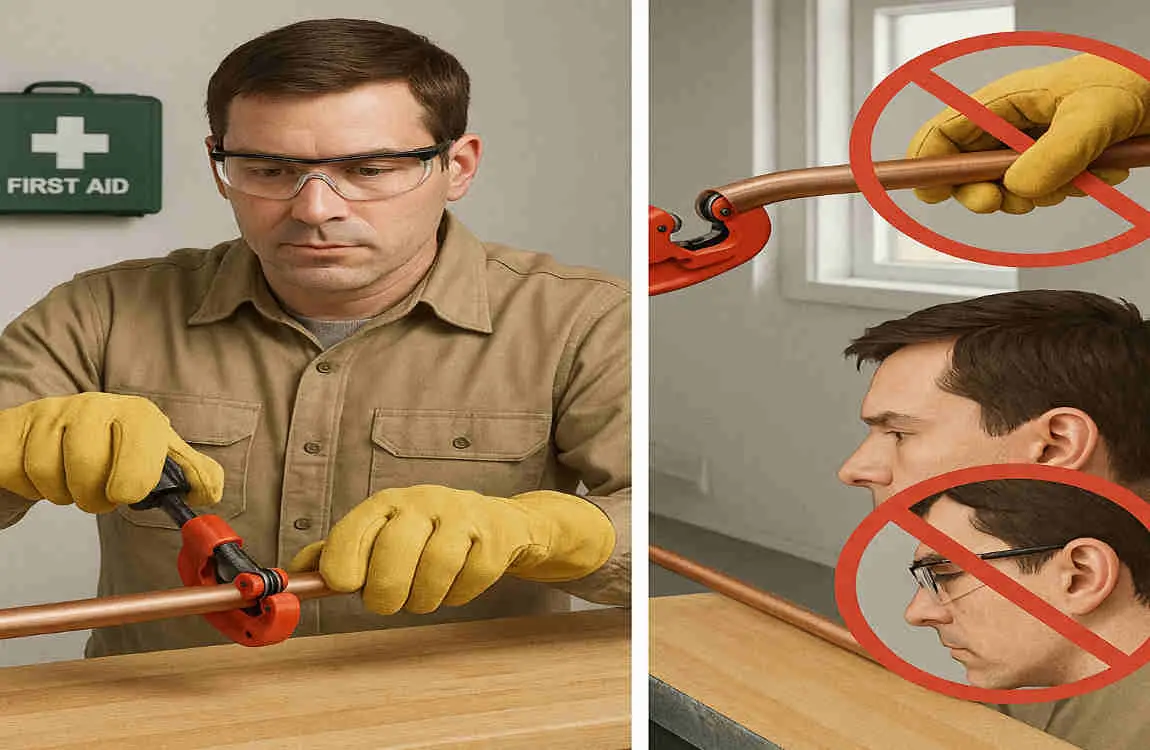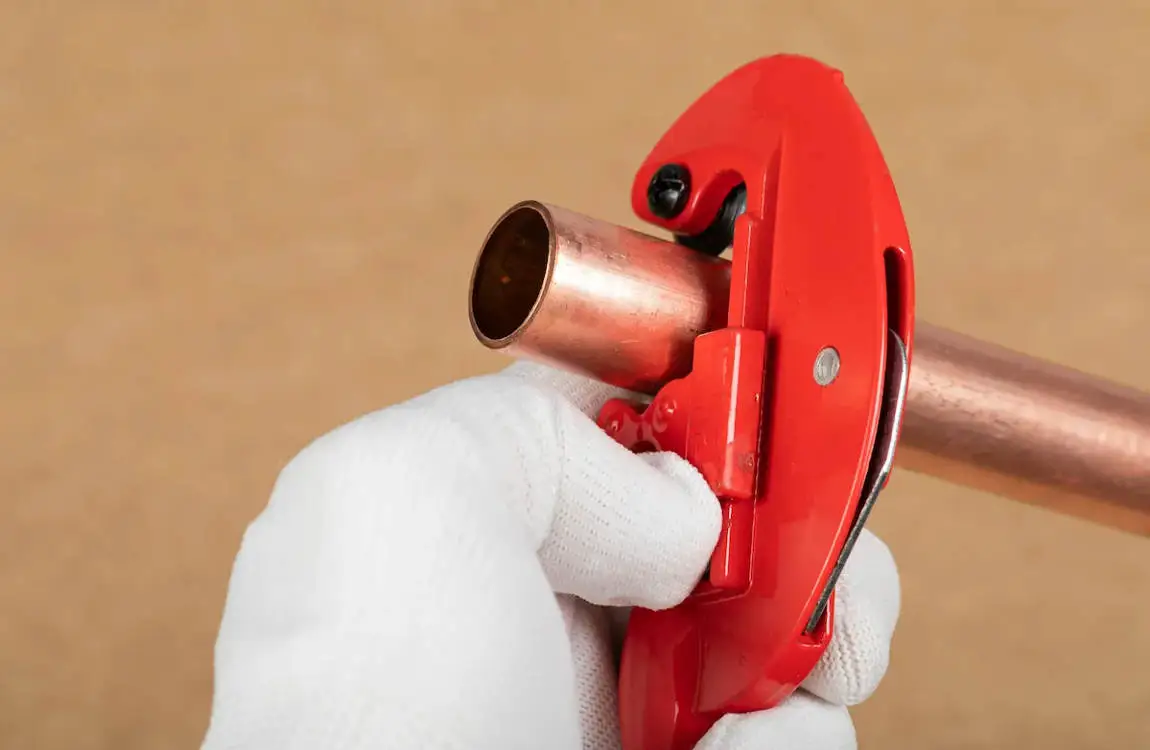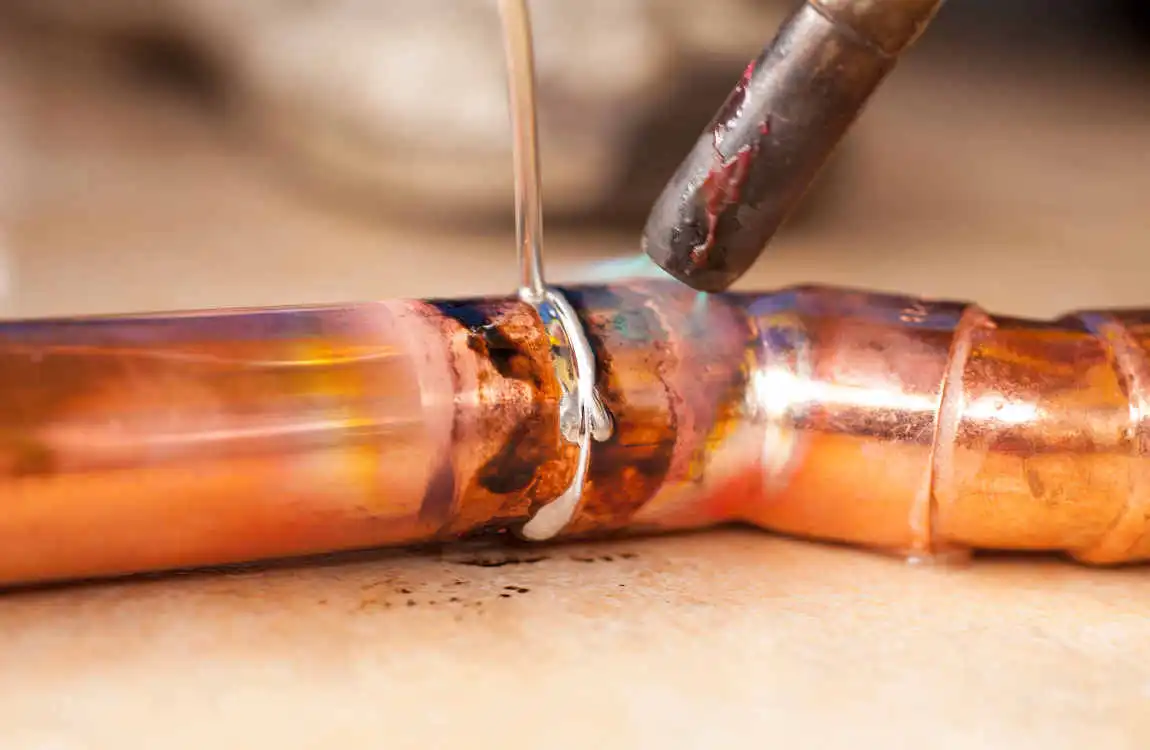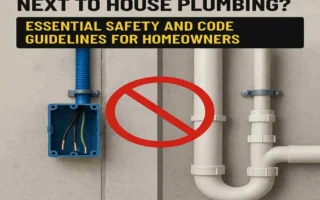Copper piping is an integral component of many home plumbing systems. Its durability, resistance to corrosion, and excellent thermal conductivity make it a popular choice for both hot and cold water lines. As a homeowner, understanding how to cut house copper pipe can be a valuable DIY skill that saves you time and money.
Understanding Copper Pipes in Home Plumbing

What are Copper Pipes?
Copper pipes are widely used in residential plumbing due to their excellent properties. They can withstand high temperatures and pressures, making them suitable for both water supply and heating systems.
Types of Copper Pipes
There are three main types of copper pipes, each with specific uses:
- Type K: Thickest walls, used for underground applications and high-pressure systems.
- Type L: Commonly used for residential plumbing and is versatile for various applications.
- Type M: Thinner walls, typically used for low-pressure applications like heating systems.
Importance of Precision in Cutting
When cutting copper pipes, precision is vital. A clean, accurate cut ensures that the pipes fit together correctly, preventing leaks and ensuring the integrity of the plumbing system.
Signs You Might Need to Cut or Replace Copper Pipes
- Visible Leaks: Any sign of moisture around joints.
- Corrosion: Green or white residue on the pipe surface.
- Unusual Noises: Water hammer or rattling sounds.
Essential Tools to Cut Copper Pipe

Before you start cutting, having the right tools is crucial. Here’s a list of must-have tools for homeowners:
Tool Description Pros Cons
Tubing Cutter: A specialized tool for cutting copper pipes cleanly. Neat cuts, easy to use. Limited to specific sizes.
Hacksaw: A hand saw that can cut through various materials. Versatile, can handle thicker pipes. Requires more effort, less precision.
Multi-tool with Saw Attachment: A power tool that can cut various materials. Quick and versatile. There is a risk of damaging the pipe if not careful.
Pipe Cutter Pliers are designed to grip and cut pipes. Suitable for tight spaces. May not provide a clean cut.
Sandpaper/Deburring Tool: Used to smooth rough edges after cutting. Essential for preparing pipes for fittings. Additional step required.
Measuring Tools: Tape measure, ruler, permanent marker for marking cuts. Ensures accuracy in measurements. N/A
Safety Equipment: Gloves, goggles, and ear protection are essential to ensure safety and protect against injuries. It must be worn at all times.
Step-by-Step Guide: How to Cut House Copper Pipe

Preparation
Before cutting, preparation is key. Here’s how to get ready:
- Measure and Mark: Use a tape measure to find the exact point where you’ll cut. Mark it clearly with a permanent marker.
- Secure the Pipe: Ensure the pipe is tightly secured in a vice or clamp to prevent movement during cutting.
Cutting Techniques Using Different Tools
Using a Tubing Cutter
- Position the Cutter: Align the cutter’s cutting wheel with your mark.
- Tighten and Rotate: Gradually tighten the cutter and rotate it around the pipe. This will create a clean cut.
- Avoid Mistakes: Common errors include cutting too fast or not tightening enough. Take your time!
Using a Hacksaw
- Proper Technique: Use a steady back-and-forth motion with even pressure. This helps achieve a straight cut.
- Miter Box or Guide: If you have one, use it to ensure your cuts are perfectly straight.
Using a Multi-Tool Saw Attachment
- Safety First: Ensure you’re wearing safety gear.
- Cutting Carefully: Use steady hands and avoid applying too much pressure to prevent damaging the pipe.
After Cutting: Deburring and Smoothing
Once you’ve cut the pipe, it’s crucial to deburr the edges:
- Remove Burrs: Use sandpaper or a deburring tool to smooth the edges of the material. This prevents damage to fittings and ensures a good seal.
- Clean the Pipe: Wipe the pipe with a cloth to remove any debris before proceeding to fittings or soldering.
Safety Tips When Cutting Copper Pipes

Safety should always be your top priority. Here are essential tips to keep in mind:
- Personal Protective Gear: Always wear gloves, goggles, and ear protection to safeguard against injuries.
- Safe Handling: Exercise caution when handling the sharp edges of cut pipes.
- Workspace Setup: Ensure your workspace is clean, well-lit, and provides ample room to work comfortably.
- In Case of an Injury: If you experience a slip or cut, clean the wound and seek medical assistance if necessary.
Common Challenges and How to Overcome Them
Cutting copper pipes can come with its challenges. Here’s how to tackle common issues:
- Hard-to-Reach Pipes: Use a flexible tubing cutter or extendable saw to access tight spaces.
- Old or Corroded Pipes: Apply penetrating oil to loosen rust before cutting.
- Preventing Pipe Deformation: Always secure the pipe firmly; avoid excessive twisting or bending.
- Straight Cuts: If your cut isn’t perfectly straight, use a file to even out the edges.
Additional DIY Tips: Preparing Copper Pipe for Fitting and Soldering

After cutting, preparing the pipe is essential for successful plumbing work:
- Join Techniques: Clean edges are crucial for effective soldering or making secure connections.
- Correct Pipe Length: Measure twice to ensure the pipe fits the intended space.
- Preparation Steps: Before proceeding with installation, consider cleaning, deburring, and guaranteeing all fittings are compatible.
When to Call a Professional Instead
While DIY is rewarding, some situations may require professional help:
- Complex Projects: If the project involves significant plumbing changes or risk of major leaks.
- Signs of Major Issues: Persistent leaks or corrosion may indicate a more substantial problem that requires expert attention.
- Balancing Costs: Weigh the potential savings against the risk of mistakes that could lead to costly repairs.
Frequently Asked Questions About Cutting Copper Pipes
1. What tools do I need to cut a copper pipe?
There are several tools you can use to cut copper pipes, depending on your preferences and the size of the pipe:
- Pipe Cutter: A specialized tool designed specifically for cutting copper pipes. It delivers clean and precise cuts.
- Hacksaw: A good alternative if you don’t have a pipe cutter. However, it requires more effort and may leave rough edges.
- Tubing Cutter: A smaller, compact version of the pipe cutter, ideal for tight spaces.
- Oscillating Multi-Tool or Reciprocating Saw: Useful for cutting pipes quickly, especially if you’re working with larger projects.
- Deburring Tool or Sandpaper: Needed to smooth out rough edges after cutting.
How do I cut copper pipe with a pipe cutter?
A pipe cutter is the most efficient and precise tool for cutting copper pipes. Here’s how to use it:
- Measure and Mark: Use a ruler or tape measure to mark the exact spot where you want to cut the pipe.
- Position the Pipe Cutter: Open the cutter and place the pipe between the blade and rollers. Align the blade with your marked line.
- Tighten the Cutter: Turn the knob to tighten the blade against the pipe. Ensure it’s snug but not overly tight.
- Rotate the Cutter: Slowly rotate the cutter around the pipe. After each full rotation, tighten the cutter slightly to deepen the cut.
- Complete the Cut: Continue tightening and rotating until the pipe is fully cut.
- Deburr the Edges: Use a deburring tool or sandpaper to remove sharp edges or burrs inside the pipe.
Can I use a hacksaw to cut copper pipe?
Yes, you can use a hacksaw, but it requires more effort and precision compared to a pipe cutter. Here’s how:
- Secure the Pipe: Clamp the pipe in place with a vise or pipe holder to prevent it from moving.
- Mark the Cut: Draw a straight line on the pipe where you want to cut.
- Cut Carefully: Use a hacksaw with fine teeth and saw through the pipe along the marked line. Go slowly to ensure a straight cut.
- File the Edges: After cutting, use a metal file or sandpaper to smooth out any rough edges.
What is the difference between a pipe cutter and a tubing cutter?
Both tools are designed for cutting copper pipes, but they have distinct differences:
- Pipe Cutter: Larger and more robust, ideal for cutting thicker pipes and working on larger plumbing systems.
- Tubing Cutter: Smaller and more compact, designed for cutting thinner pipes or working in tight spaces. Tubing cutters are often used for smaller-diameter copper pipes.
Do I need to deburr the copper pipe after cutting?
Yes! Deburring is an essential step after cutting copper pipe. When you cut copper, rough edges or burrs are often left behind. These can:
- Cause Leaks: Burrs can interfere with the pipe’s connection to fittings, leading to improper seals.
- Restrict Water Flow: Rough edges inside the pipe can trap debris and reduce water flow.
- Damage Fittings: Sharp burrs can scratch or damage fittings during installation.
Deburring Tools: Use a deburring tool, a round file, or sandpaper to smooth the cut edges. Simply rotate the tool inside the pipe opening to remove the burrs.
How do I cut copper pipe in tight spaces?
Cutting copper pipe in confined spaces can be tricky, but here are some tips:
- Use a Mini Tubing Cutter: This compact tool is specifically designed for tight spaces.
- Try an Oscillating Tool: An oscillating multi-tool with a metal-cutting blade can be a lifesaver in hard-to-reach areas.
- Hacksaw with a Short Blade: If you’re using a hacksaw, opt for a shorter blade to maneuver in tight spots.
- Remove Nearby Obstacles: If possible, remove surrounding pipes, fixtures, or obstructions to give yourself more space to work.
Can I cut copper pipe while it’s still installed?
Yes, you can cut copper pipe while it’s installed, as long as you have the right tools:
- Pipe or Tubing Cutter: These tools work well for installed pipes because they require minimal clearance around the pipe.
- Oscillating Tool: Ideal for cutting pipes flush against walls or in tight spaces.
Tip: Make sure to turn off the water supply and drain the pipes before cutting to avoid flooding.
How do I measure the length of copper pipe before cutting?
Accurate measurements are crucial to ensure the pipe fits correctly. Follow these steps:
- Measure Twice: Use a tape measure to mark the exact length. Measure twice to avoid mistakes.
- Account for Fittings: If connecting to a fitting, account for the portion of the pipe that will insert into the fitting.
- Mark Clearly: Use a permanent marker or pencil to make a clear, straight line where you’ll cut.
Can I reuse copper pipe after cutting?
Yes, copper pipes can be reused after cutting, as long as they are in good condition. Here’s how:
- Inspect the Pipe: Check for cracks, dents, or corrosion before reusing.
- Clean the Edges: Deburr and sand the cut ends to ensure a smooth connection.
- Test Fit: Ensure the cut piece fits properly with the fittings before installation.
What safety precautions should I take when cutting copper pipe?
Cutting copper pipe involves sharp tools and debris, so follow these safety tips:
- Wear Safety Glasses: Protect your eyes from metal shards or sparks.
- Use Gloves: Wear cut-resistant gloves to protect your hands from sharp edges.
- Secure the Pipe: Use a clamp or vise to hold the pipe steady while cutting.
- Work in a Safe Area: Ensure the work area is clear of flammable materials and provides adequate lighting.
- Turn Off Water Supply: Always turn off the water supply and drain the pipes before cutting.




